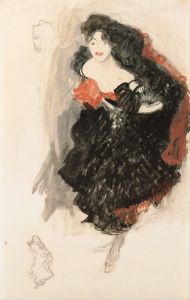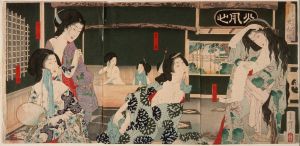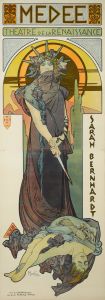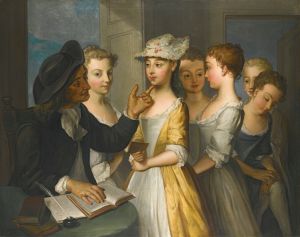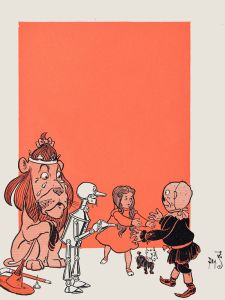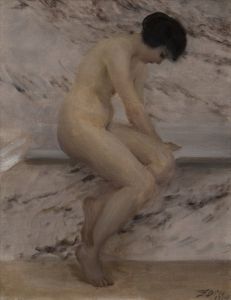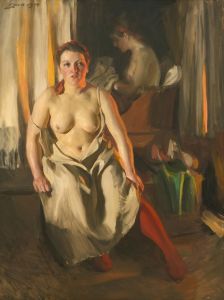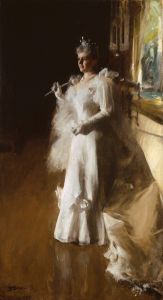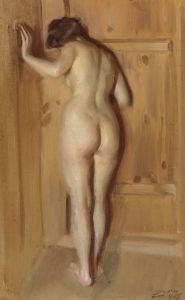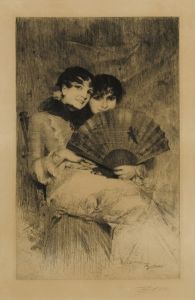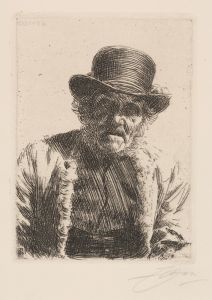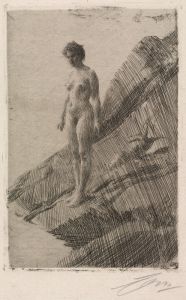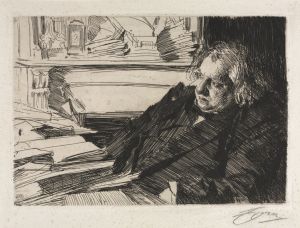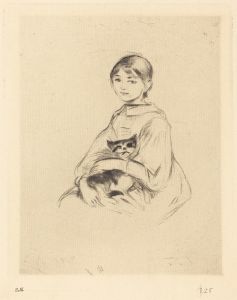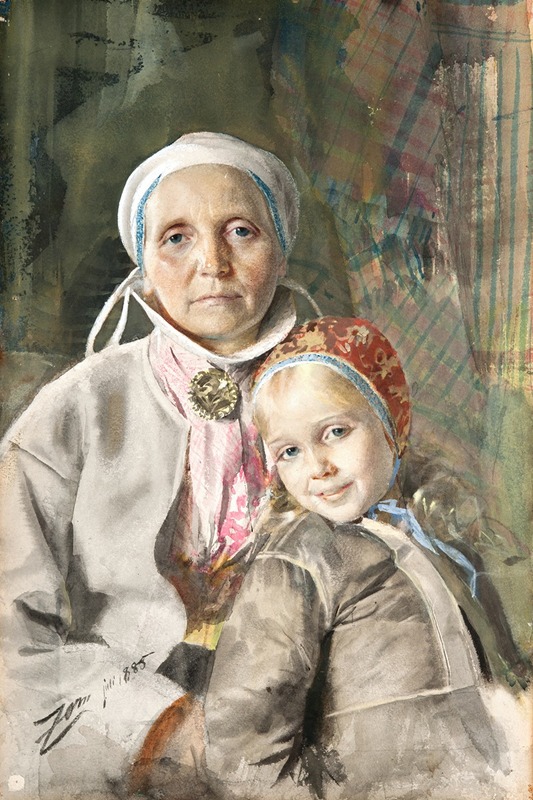
Mona and Karin
A hand-painted replica of Anders Zorn’s masterpiece Mona and Karin, meticulously crafted by professional artists to capture the true essence of the original. Each piece is created with museum-quality canvas and rare mineral pigments, carefully painted by experienced artists with delicate brushstrokes and rich, layered colors to perfectly recreate the texture of the original artwork. Unlike machine-printed reproductions, this hand-painted version brings the painting to life, infused with the artist’s emotions and skill in every stroke. Whether for personal collection or home decoration, it instantly elevates the artistic atmosphere of any space.
Mona and Karin is a painting by the renowned Swedish artist Anders Zorn, created in 1893. Zorn, celebrated for his mastery in portraiture, genre scenes, and depictions of light and water, was one of Sweden's most prominent artists during the late 19th and early 20th centuries. This particular work exemplifies his skill in capturing intimate and domestic moments, as well as his ability to portray the human figure with warmth and realism.
The painting depicts two young girls, Mona and Karin, who were likely local children from the artist's hometown of Mora in Dalarna, Sweden. Zorn often drew inspiration from the rural life and people of this region, which played a significant role in his artistic identity. The girls are shown seated together in a serene and naturalistic setting, with soft light illuminating their faces and surroundings. The composition reflects Zorn's interest in everyday life and his talent for creating a sense of immediacy and intimacy in his works.
Zorn's technique in this painting demonstrates his characteristic use of loose, fluid brushstrokes and a limited but harmonious color palette. These elements contribute to the lifelike quality of the scene while maintaining an impressionistic softness. The artist's ability to convey texture and light is particularly evident in the rendering of the girls' clothing and the subtle interplay of light and shadow on their faces.
The painting is part of Zorn's broader body of work that often featured women and children in natural or domestic settings. His depictions of such subjects were not only artistically significant but also culturally resonant, as they reflected the values and traditions of Swedish rural life during the period. Zorn's works, including "Mona and Karin," are celebrated for their ability to bridge the gap between realism and impressionism, showcasing his technical prowess and sensitivity to his subjects.
Today, "Mona and Karin" is recognized as an example of Zorn's ability to capture the essence of his subjects with both technical skill and emotional depth. The painting is housed in the Zorn Museum (Zornmuseet) in Mora, Sweden, which is dedicated to preserving and showcasing the artist's legacy. The museum holds an extensive collection of Zorn's works, including paintings, etchings, and sculptures, as well as personal artifacts that provide insight into his life and career.
Anders Zorn remains a central figure in Swedish art history, and "Mona and Karin" is a testament to his enduring influence and artistic achievements.





